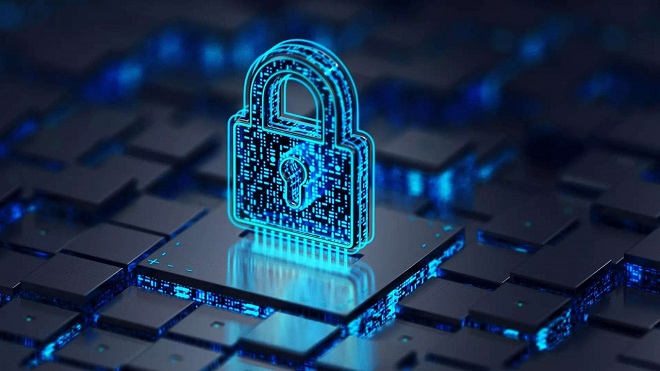The Future of Cyber Defenses: Ransomware Protection Strategies to Implement Now

Key Takeaways:
- Ransomware is a growing threat that can cause significant damage to organizations.
- A layered security approach, including technology and human vigilance, is essential for protection.
- Regular training, backups, and updates are key components of a defense strategy against ransomware.
- Understanding current threats and future trends helps organizations stay ahead of cybercriminals.
- Investing in ransomware protection is a cost-effective measure in the long run.
Understanding Ransomware and Its Impact on Businesses
Ransomware: it’s the digital plague of the modern business world, bringing even the most robust enterprises to their knees. This malware variant encrypts data and demands payment for its release, which has caused turmoil across various industries. Businesses of all sizes have fallen victim, from small local firms to global corporations. The financial implications can be staggering, with the cost of downtime often overshadowing the ransom itself. Therefore, understanding the nature of these attacks and the importance of a strong ransomware protection strategy is beneficial and imperative for organizational survival.
Key Vulnerabilities and Entry Points for Ransomware
Ransomware attackers are opportunistic hunters, always on the prowl for the weakest link in an organization’s digital armor. Phishing emails, laden with malicious attachments or links, are their weapons of choice. They also seek out systems with outdated software, unpatched vulnerabilities, or weak security protocols. Organizations must recognize these threats and fortify their defenses accordingly. Employees must be trained to spot the signs of a phishing attempt and report it without hesitation — this human firewall is often the difference between security and compromise.
Essential Ransomware Protection Measures for Organizations
The fundamental rule in the fight against ransomware is preparedness. Organizations should adopt a comprehensive cybersecurity framework that includes regular data backups, real-time threat monitoring, and response plans tailored to ransomware scenarios. Backups should be stored securely, with offline copies ensuring that critical data can be recovered even if the network is compromised. Empowering organizations to restore operations reduces downtime and associated costs, making an attack less devastating.
Technological Solutions to Ramp Up Ransomware Defense
Technological innovations provide organizations with tools to defend against ransomware attacks. Advanced threat detection systems can identify suspicious activity before it becomes catastrophic. Anti-ransomware solutions, imbued with machine learning capabilities, can evolve with the threats, offering real-time, up-to-the-minute protection. Additionally, data encryption acts as a stalwart guardian of information integrity; even in the unfortunate event of data theft, encrypted information remains a jumbled puzzle to unauthorized users.
The Human Aspect of Ransomware Protection
Technology can only partially replace the need for an aware and informed workforce. Fostering a security-conscious culture involves regular training sessions, phishing and cyberattack scenario simulations, and encouraging vigilant behavior. When employees can recognize and respond correctly to threats, the organization becomes more resilient against the dire consequences of ransomware infiltration.
Navigating Ransomware Incidents: Response and Recovery
Even with robust preventative measures, ransomware incidents can still occur. When they do, the speed and efficiency of the response are vital. Organizations must be ready to isolate infected systems, communicate transparently with stakeholders, and engage with cybersecurity professionals to mitigate damage. Legal obligations, including data breach notifications, must be swiftly and accurately fulfilled to maintain compliance with regulations and preserve public trust. Business continuity and disaster recovery plans should be rigorously tested and updated regularly to keep pace with cyber threats’ evolving nature.
Best Practices in Maintaining Software and System Security
Keeping systems secure is an ongoing task that requires diligence and consistency. A robust security posture includes regular software updates and patches, which close off vulnerabilities that ransomware could exploit. Secure configuration settings also play a crucial role; default settings often prioritize convenience over security and should be adjusted. Lastly, conducting periodic penetration testing and vulnerability assessments provides insight into potential weaknesses, allowing organizations to strengthen their systems proactively against ransomware attacks.
Analyzing the Cost-Benefit of Ransomware Protection Investments
The question isn’t whether a business can afford to invest in ransomware protection but whether it can afford not to. The potential cost of a ransomware attack far exceeds the investment in preventative measures, making cybersecurity a smart financial decision. Risk assessments and cost-benefit analyses highlight the value of security investment, turning expenditures into strategic measures that safeguard the bottom line. Furthermore, cyber insurance is becoming essential to comprehensive risk management strategies, offering an extra layer of financial protection should an incident occur.
Future Outlook: Evolving Threats and Ransomware Defense Trends
The future of ransomware is a menacing cloud on the cyber horizon, but with it comes the silver lining of innovation in defense strategies. Cybersecurity experts continually develop new tools and tactics to stay ahead of cybercriminals. As artificial intelligence and machine learning become more integrated into security systems, their predictive capabilities improve, providing new methods to preempt attacks. Collaboration among businesses and government agencies leads to more robust threat intelligence sharing, bolstering the overall resistance to ransomware on a larger scale.
Conclusion: Building a Resilient Security Posture Against Ransomware
As we navigate the complexities of cyber threats in an increasingly digital world, the importance of a well-rounded, forward-thinking strategy against ransomware cannot be overstated. An organization’s commitment to cybersecurity must be unwavering and comprehensive, integrating both the latest technological solutions and the human element of security.




